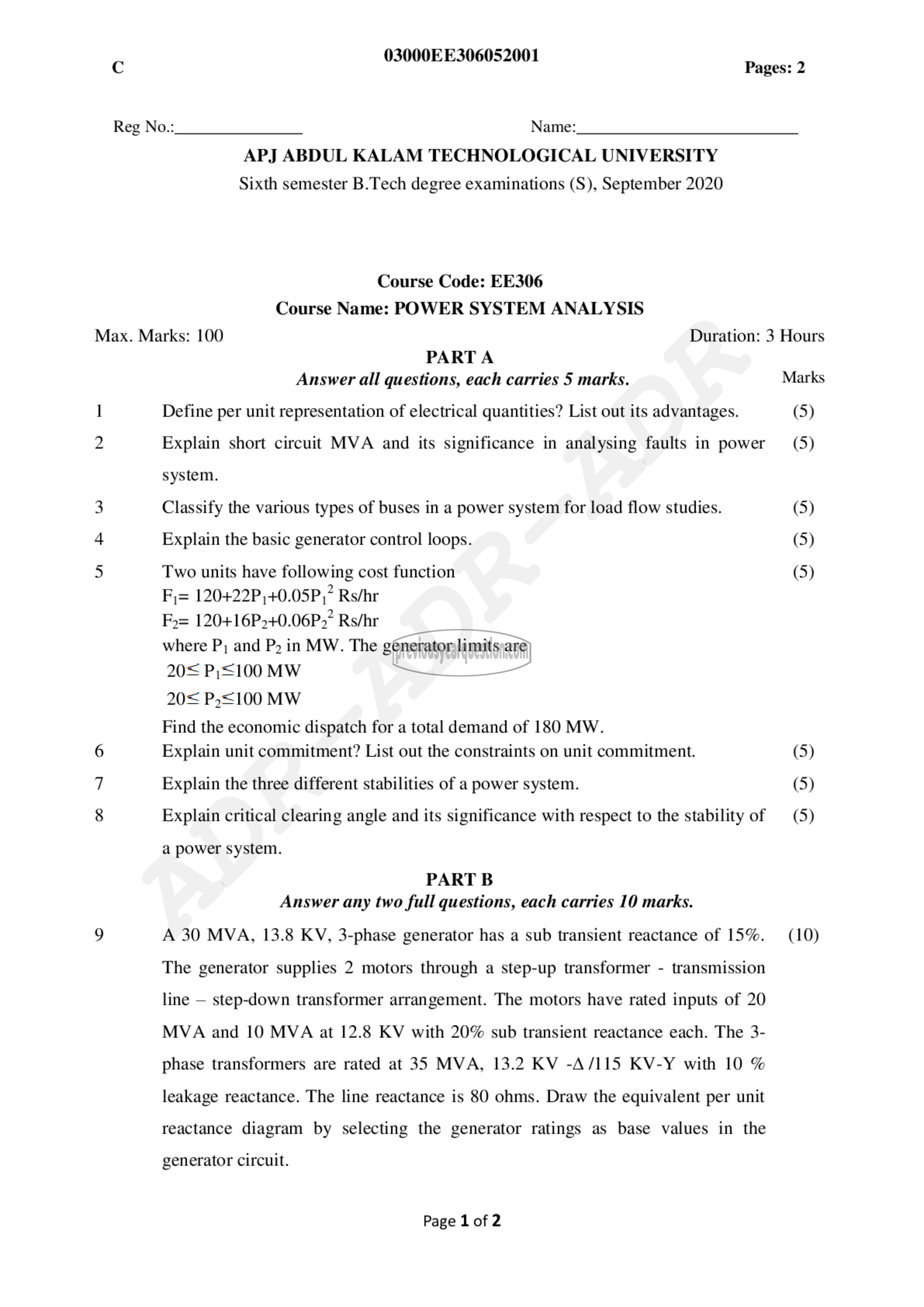APJ ABDUL KALAM TECHNOLOGICAL UNIVERSITY Previous Years Question Paper & Answer
Semester : SEMESTER 6
Subject : Power System Analysis
Year : 2020
Term : SEPTEMBER
Scheme : 2015 Full Time
Course Code : EE 306
Page:1
( 03000EE306052001 Pages: 2
Reg No.: Name:
APJ ABDUL KALAM TECHNOLOGICAL UNIVERSITY
Sixth semester B.Tech degree examinations (S), September 2020
Course Code: EE306
Course Name: POWER SYSTEM ANALYSIS
Max. Marks: 100 Duration: 3 Hours
PARTA
Answer all questions, each carries 5 marks. Marks
1 Define per unit representation of electrical quantities? List out its advantages. (5)
2 Explain short circuit MVA and its significance in analysing faults in power (5)
system.
Classify the various types of buses in a power system for load flow studies. (5)
4 Explain the basic generator control loops. (5)
5 Two units have following cost function (5)
215 120+222 ۳0,052 2ر Rs/hr
Fo= 120+16P2+0.06P2” Rs/hr
where رط and رط in MW. The generator limits are
205 ?1=100 MW
20= ?2=100 MW
Find the economic dispatch for a total demand of 180 MW.
6 Explain unit commitment? List out the constraints on unit commitment. (5)
7 Explain the three different stabilities of a power system. (5)
8 Explain critical clearing angle and its significance with respect to the stability of (5)
a power system.
PART 13
Answer any two full questions, each carries 10 marks.
9 A 30 MVA, 13.8 KV, 3-phase generator has a sub transient reactance of 15%. (10)
The generator supplies 2 motors through a step-up transformer - transmission
line — step-down transformer arrangement. The motors have rated inputs of 20
MVA and 10 MVA at 12.8 KV with 20% sub transient reactance each. The 3-
phase transformers are rated at 35 MVA, 13.2 KV -ಗಿ/115 KV-Y with 10 %
leakage reactance. The line reactance is 80 ohms. Draw the equivalent per unit
reactance diagram by selecting the generator ratings as base values in the
generator circuit.
Page 1 of 2
